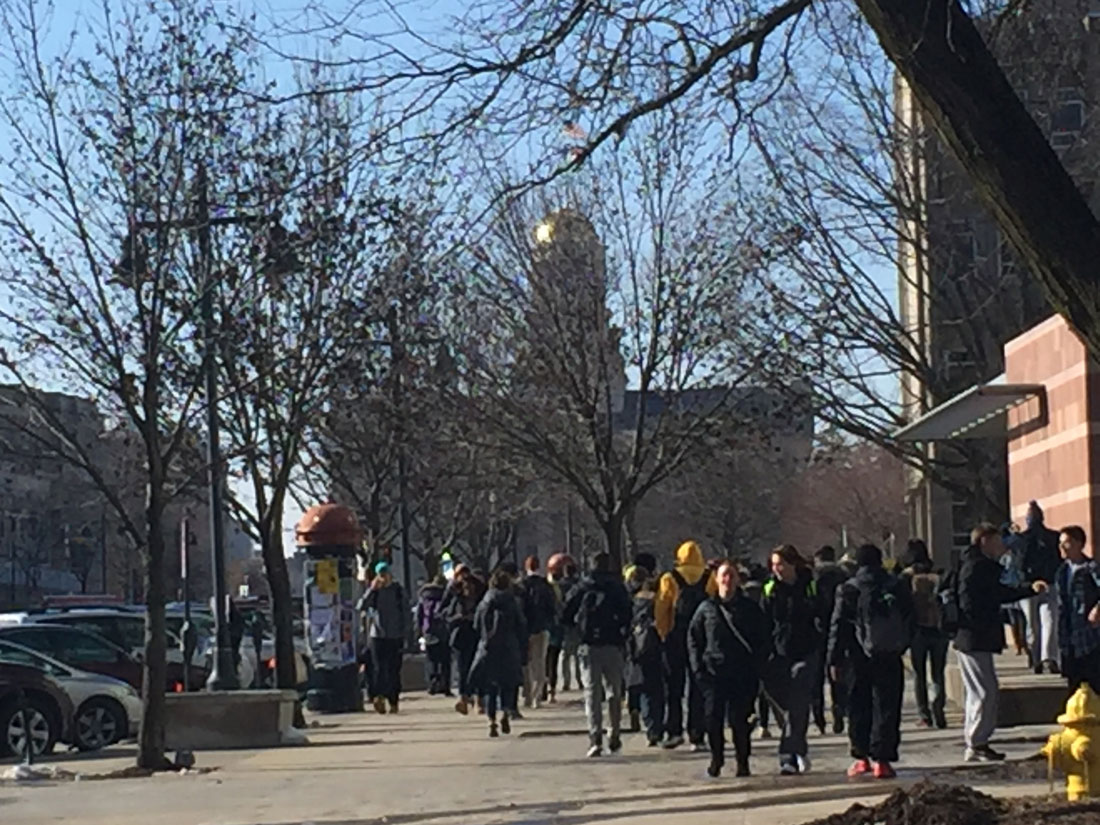By Morgan Gilbard
IOWA CITY, Iowa — Presidential hopeful Marco Rubio may be trailing in the polls, but he is capturing the attention of young Iowa voters uninspired by Republican front-runners in a party often seen as too old and too white.
“Our generation has a more hopeful message rather than an angry kind of message,” said Meaghan O’Brien, president of the Hawkeyes’ Marco for President chapter and a campaign volunteer. “I feel like he has the potential to not only further the Republican Party, but also reach across the aisle and solidify a stronger relationship with Democrats.”

Millennials, usually categorized as individuals between 18 and 33, are less willing to identify with a party than ever before, according to a Pew Research study in April 2015. Only 18 percent identified as Republican and 28 percent as Democrat. A staggering 48 percent considered themselves independent, compared with 40 percent in 2008.
“The times are such that there’s a greater intensity for the confusion or the frustration,” Timothy Hagle, professor of political science at University of Iowa, said of young voters. “You do have more partisanship going on nowadays than you did many years ago. It may cause people entering the system to sit back and wait until they can figure it out a little bit.”
When it presses respondents to identify with a party, Pew still finds that young Democrats outnumber their Republican peers, 51 percent to 35 percent. But the increase in swing votes among young people could give Rubio traction in a general election, especially when many are struggling to connect with the candidates leading the Republican pack.
“Rubio seems to have attracted young folks and it’s not entirely surprising. He has this aspirational message not unlike Obama,” Hagle said. “Rubio may be seen as someone who can work with Washington. Sometimes you want to fight for people, but sometimes you want someone who can work for people. Rubio’s got to show that he’s the candidate that can do that.”
While Trump and Texas Sen. Ted Cruz enjoy support on the University of Iowa campus, Janelle Smithson of the College Republicans said neither frontrunner has generated the enthusiasm to match their standing in state and national polls. This may signal that younger voters are searching for something different.
“I like to think that young Republicans are kind of — a lot– more open for dialogue, not that older Republicans aren’t,” said Smithson said. “You have fresh ideas, you have new thoughts. You have new things that you’re willing to support or not support.”
Rubio’s road to the nomination looks arduous, with recent polls showing him about 20 points behind Trump, according to a Real Clear Politics analysis. And while the Iowa winner is rarely the Republican nominee, the Rubio campaign faces another problem: young Republicans are far less likely to caucus than older party members. The Iowa Caucus Project found that only 15 percent of Republicans between the ages of 17 and 29 caucused in 2012.
Rubio’s Hawkeye supporter Meaghan O’Brien will be one of them on Monday, after she volunteers at the candidate’s office in Cedar Rapids this weekend. If a candidate other than Rubio wins the nomination, O’Brien still thinks she’ll vote Republican, but she concedes, “I’ll have to see who it is when the time comes.”


